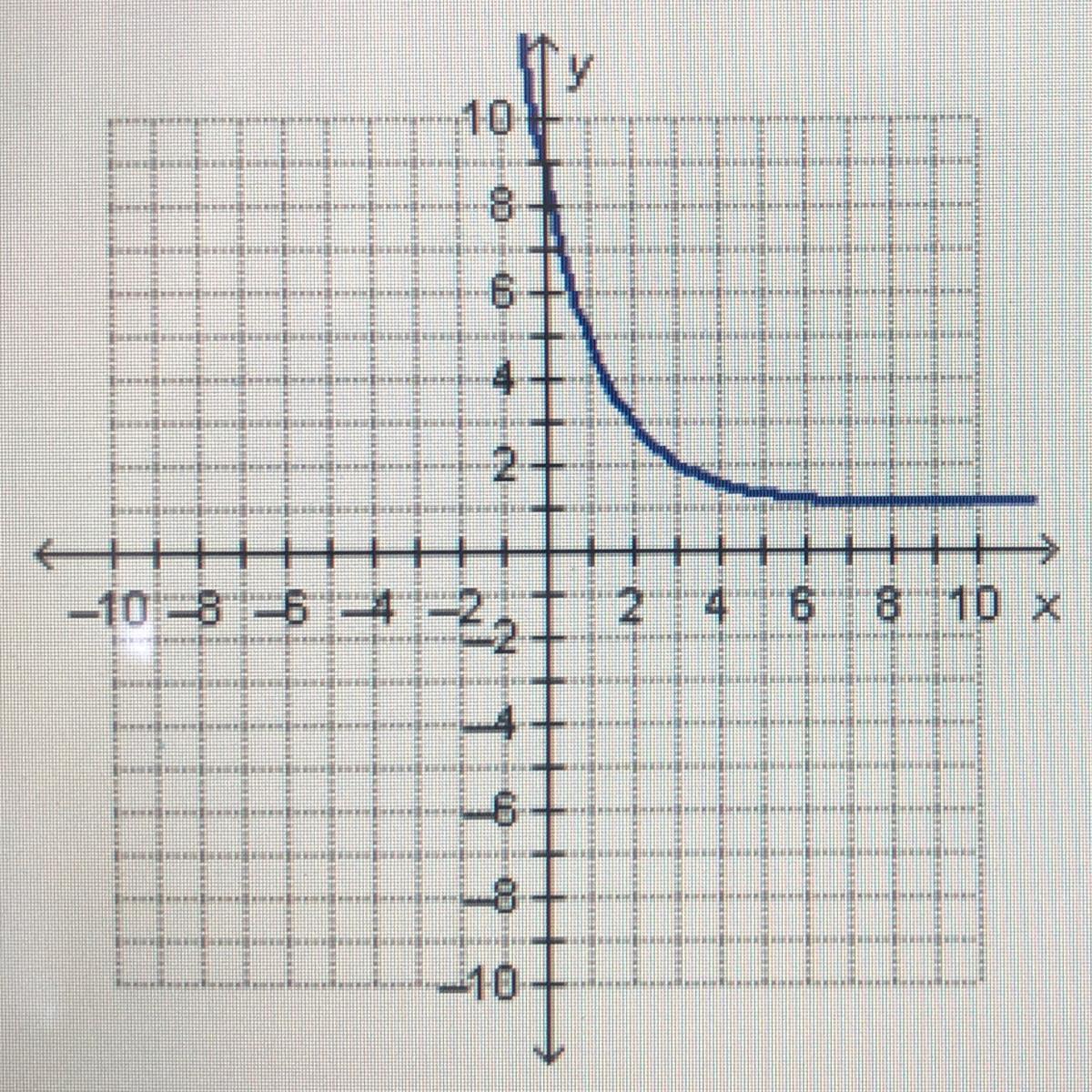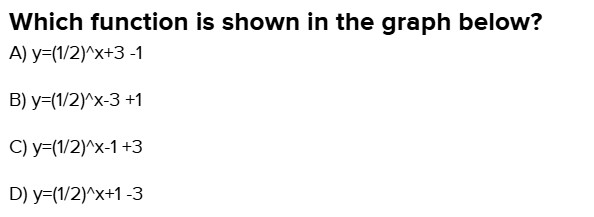QQuestionAnatomy and Physiology
QuestionAnatomy and Physiology
| | | | | | | | | | | | | | | | | | | | | | | | | | | | | | | | | | | | | | | | | | | | | | | | | | | | | | | | | | | | | | | | | | | | | | | | | | | | | | | | | | | | | | | | | | | | | | | | | | | | |
### Which function is shown in the graph below?
A) y=(1 / 2)^x+ 3 - 1
B) y=(1 / 2)^x- 3 + 1
C) y=(1 / 2)^x- 1 + 3
D) y=(1 / 2)^x+ 1 - 3
Attachments


6 months agoReport content
Answer
Full Solution Locked
Sign in to view the complete step-by-step solution and unlock all study resources.
Step 1Let's solve this step by step by analyzing the graph and comparing it with the given function options.
Step 2: Identify the key characteristics of the graph
- The graph is an exponential function with base $$rac{1}{2}
- The graph appears to have a horizontal asymptote - The graph shifts vertically and horizontally from the standard exponential function
Final Answer
C) y = \left(rac{1}{2}\right)^{x- 1} + 3
Need Help with Homework?
Stuck on a difficult problem? We've got you covered:
- Post your question or upload an image
- Get instant step-by-step solutions
- Learn from our AI and community of students